New START: A timeline of inaction and disingenuous proposals
By Shannon Bugos | December 14, 2020
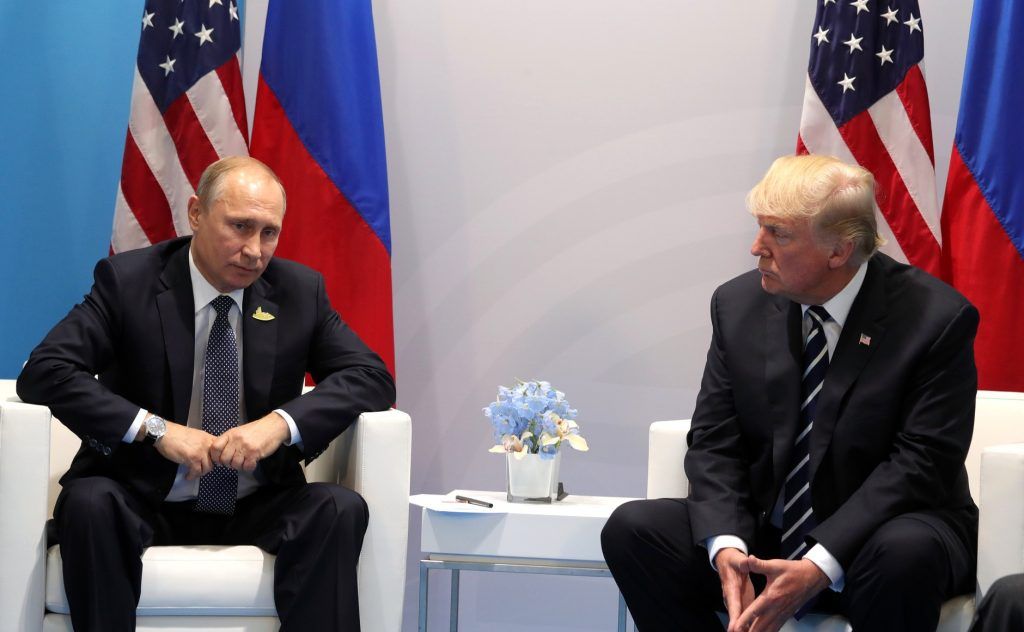 Russian President Vladimir Putin and US President Donald Trump meet on the sidelines of a G20 meeting in Hamburg on July 7, 2017. Credit: Kremlin Presidential Executive Office.
Russian President Vladimir Putin and US President Donald Trump meet on the sidelines of a G20 meeting in Hamburg on July 7, 2017. Credit: Kremlin Presidential Executive Office.
Upon entering office on January 20, 2021, President-elect Joe Biden will have 16 days before the last remaining treaty limiting US and Russian nuclear arsenals, the 2010 New Strategic Arms Reduction Treaty (New START), expires.
The treaty limits the two countries' strategic nuclear arsenals to no more than 1,550 deployed warheads and 700 deployed missiles and heavy bombers each. The two countries met these limitations by the implementation deadline in 2018.
If the treaty expires on February 5, it will be the first time since 1972 that the United States and Russia would have no negotiated constraints on their strategic nuclear arsenals.
Fortunately, New START allows for an extension of up to five years so long as the US and Russian presidents both agree to it.
While Russia initially proposed a five-year extension with no preconditions in December 2019, the two countries exchanged dueling proposals in October 2020, pairing a one-year extension with a one-year freeze on all nuclear warheads. No deal ultimately came to fruition as Moscow rejected the additional US condition that the freeze be subject to verification measures.
Since the US presidential election, Russia has said that it would still be willing to extend New START by five years without any preconditions.
President-elect Biden has repeatedly expressed his support for an extension of New START. But there is uncertainty about how long of an extension he might pursue. His nominee for Secretary of State, Antony Blinken, suggested in November that a full five-year extension is on the table for the incoming administration, but more recent reports revealed debate among Biden’s advisors about whether to pursue a five-year extension or something shorter. There are also questions about what Biden might do with the warhead freeze concept that he stands to inherit from the Trump administration.
Below is a timeline that illustrates how the United States and Russia have landed here, chronicling each shift in both countries’ respective arms control negotiating positions. It demonstrates how the Trump administration largely delayed engagement with Russia on the future of New START for three and a half years and how, once it did engage, its actions raised questions about whether it genuinely wanted to secure an extension of the accord or was instead merely trying to run out the clock on the treaty.
The timeline helps paint a picture of the arms control situation the Biden administration will take charge of in January.
-
February 5, 2011
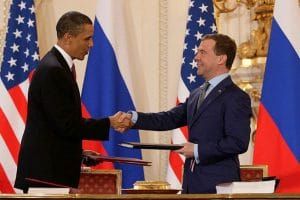
kremlin.ru
New START begins
Following a year of talks led by US State Department assistant secretary Rose Gottemoeller and her Russian counterpart Anatoly Antonov, the New START agreement is signed by Barack Obama and Dmitry Medvedev on April 10, 2010. After ratification, the treaty goes into force on February 5, 2011, capping both countries' strategic nuclear arsenals with provisions for verification by both sides.
-
January 28, 2017

Official White House photo by Joyce N. Boghosian
Putin raises New START extension, Trump calls it a bad deal.
President Trump talks with Russian President Vladimir Putin for the first time as president. Reuters later reports that during this call, when Putin asked about the possibility of extending New START, Trump had to pause the call in order to ask an aide what the treaty was. Trump then called the treaty a bad deal negotiated by the Obama administration.
-
Trump administration puts off a decision on New START
Christopher Ford, special assistant to the president and National Security Council senior director for weapons of mass destruction and counterproliferation, says that the administration would wait to consider extension of treaty until after the completion of the Nuclear Posture Review and after the two countries meet the implementation deadline.
After the implementation deadline, he says, “we can begin to assess whether or not extending New START for an additional five years…is in our national security interest.”
-
February 5, 2018
US and Russian nuclear forces reached the New START strategic warhead and launcher limits ahead of the treaty's February 2018 deadline. (Courtesy Arms Control Association)
The treaty goals are met.
One year into the Trump presidency and seven years after New START took force, the United States and Russia meet the treaty's implementation deadline, limiting their strategic nuclear arsenals to no more than 1,550 deployed warheads and 700 deployed missiles and heavy bombers each. The US State Department has continually assessed that Russia complied with the treaty.
-
March 1, 2018
Russia complicates New START extension with new weapons.
In an address to the Federal Assembly, Putin announces the development of five new nuclear weapons delivery systems, which had begun many years earlier, following the US withdrawal from the 1972 Anti-Ballistic Missile Treaty in 2002.
-
July 16, 2018

kremlin.ru
Putin hints Russia might make extra demands before any extension.
Trump and Putin meet in Helsinki, and their meeting includes a discussion on arms control. Afterwards, Putin says, “I reassured President Trump that Russia stands ready to extend [New START], to prolong it, but we have to agree on the specifics at first, because we have some questions to our American partners.”
-
United States floats the unworkable idea of including China
Secretary of State Mike Pompeo says that “Both the Russians and the United States have been compliant” with New START.
Regarding a five-year extension, he said, “We’re at the very beginning of conversations about renewing that. If we can get the deal right, if we can make sure it fits 2021 and beyond, President Trump has made very clear that if we can get a good solid arms control agreement, we ought to get one.” He also said that “we need to make sure we’ve got all of the parties that are relevant as a component of this as well,” which would include China, since “it’s certainly China that has large numbers.”
-
April 25, 2019
“Include Russia and China … include all the weapons, all the warheads, all the missiles.”
Trump introduces the idea of a new treaty, with far-fetched aims.
A senior Trump administration official says that President Trump instructed his staff in April to seek a new arms control agreement on nuclear weapons that would “include Russia and China and should include all the weapons, all the warheads, all the missiles.”
-
May 6, 2019

From the official Twitter account of US presidential envoy for arms control Marshall S. Billingslea
China rejects the idea of joining New START
China rejects the idea that Beijing will join the United States and Russia in arms control talks.
Foreign Ministry spokesperson Geng Shuang says, “We oppose any country’s attempt to make an issue out of China on arms control and will not participate in any negotiation for a trilateral nuclear disarmament agreement.”
This was to be the first of many refusals by China to join trilateral arms control talks.
-
June 18, 2019
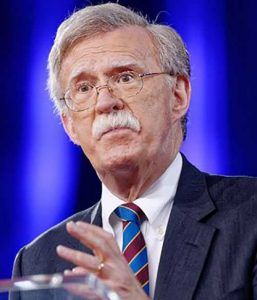
US national security advisor believes New START extension unlikely.
National Security Advisor John Bolton says that, on the issue of an extension of New START, “There’s no decision but I think it’s unlikely.”
-
November 1, 2019
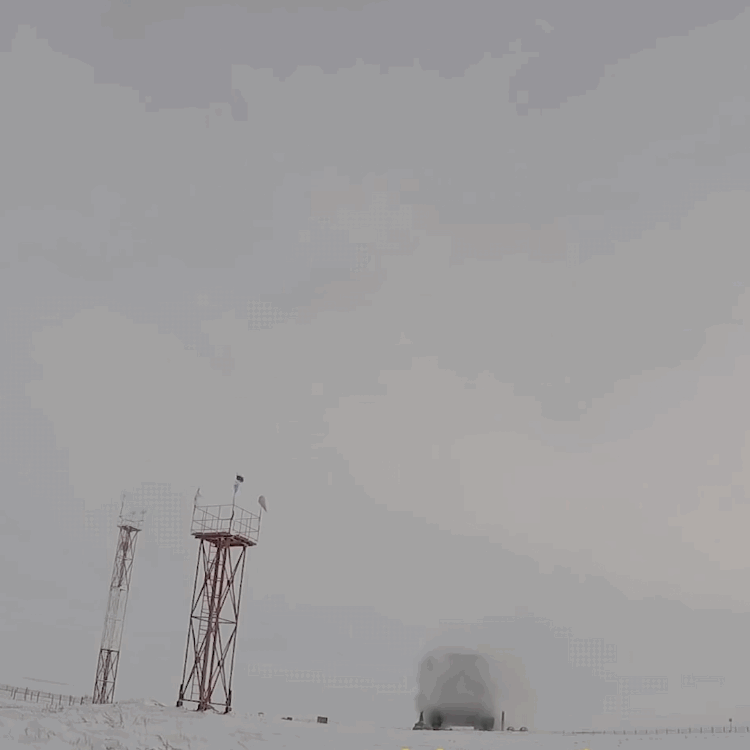
Test launch of an ICBM carrying the Avangard hypersonic glide vehicle on December 26, 2018 (Russian Defense Ministry)
Russia concedes that New START would cover two of its new systems.
Russia says that two of its new nuclear weapons delivery systems, the Sarmat intercontinental ballistic missile and the Avangard hypersonic glide vehicle, would be covered by New START. The Trump administration had been criticizing the treaty for not covering these weapons. Meanwhile, other weapons concerning to Washington would not be deployed until after 2026, a report released in November finds.
-
December 3, 2019
“We may bring them in later, or we may bring them in now.”
Trump wavers on earlier demands for China to join the treaty
Trump says that, “Russia wants to make a deal on arms control.” He adds, “We’ll also certainly bring in, as you know, China. And we may bring them in later, or we may bring them in now.” Later that day, Trump falsely claims that China is “extremely excited” about getting involved in an arms control agreement.
-
December 5, 2019
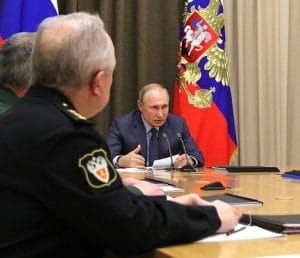
kremlin.ru
Russia agrees to extend the treaty without any extra demands.
Putin says, “Russia is willing to immediately, as soon as possible, before the year is out, renew this treaty without any preconditions.” This marks a shift in the Russian position, which previously had wanted certain concerns addressed before it would agree to an extension.
-
United States sketches out goals for new treaty with Russia and China.
Marshall Billingslea gives his first public remarks as US presidential envoy for arms control, during which he says that Trump gave him “crystal clear” instructions to achieve “the most complete, effective, and verifiable arms control agreement that can be negotiated.” This agreement, he says, must include China, cover new Russian strategic delivery systems and non-strategic nuclear weapons, and have “as strong a verification and compliance regime as you could imagine.”
-
June 22, 2020
United States hinges New START extension on progress toward new deal.
Billingslea meets his Russian counterpart, Deputy Foreign Minister Sergey Ryabkov, in Vienna for another round of the strategic security dialogue.
During a press briefing two days later, Billingslea says, “We are willing to contemplate an extension of [New START] but only under select circumstances.” Those circumstances, he continues, include making “progress” toward a new trilateral arms control agreement that has strong verification measures, covers all nuclear warheads, and involves China. He does not define what he views as “progress.”
-
July 30, 2020
Trump dismisses idea of including China.
Trump says again that, with respect to trying to include China in arms control talks, “We’ll talk about that later…China right now is a much lesser nuclear power—you understand that—than Russia.” He suggests that first, the administration would focus on arms control with Russia and then “go to China together.”
-
August 17-18, 2020

Russian Ministry of Foreign Affairs
In another shift, US seeks a “politically binding” agreement on top of New START.
Billingslea and Ryabkov meet again in Vienna, and Billingslea afterwards communicates a shift in the US arms control strategy.
Billingslea tells the press that the Trump administration is now seeking a politically binding framework with Moscow as an interim step to a new trilateral arms control agreement. This framework, Billingslea says, must cover all nuclear warheads, fix “the most glaring deficiencies” in the New START verification regime, and include China not immediately, as previously demanded, but in the future. The special envoy says that he will recommend Trump extend New START if Moscow agrees to the framework.
Russia calls the US proposal “unrealistic.”
-
October 13, 2020
1/2 🇷🇺DFM S.#Ryabkov: 💬We did inform US on our approaches in different formats, including on paper. Thus #US has no grounds to be delusional and try and sell this situation as if it was in high developing constructive dynamic on the edge of breakthrough. pic.twitter.com/jteOEXMWeo
— Russian Mission Vienna (@mission_rf) October 14, 2020
US shifts again, abandoning earlier demands and instead proposing a shorter extension plus a warhead freeze.
Billingslea reveals that during his latest meeting with Sergey Ryabkov in Helsinki on October 5, he put a new proposal on the table: an extension of New START “for some period of time” paired with a freeze on all US and Russian nuclear warheads and some type of verification regime for the freeze. Robert O’Brien, the US National Security Advisor, later clarifies that the duration of both the extension and the freeze would be for one year. “There is an agreement in principle at the highest levels of our two governments” on this proposal, he claims. Ryabkov dismisses Billingslea’s claim as “delusional.”
-
October 16, 2020
-
October 20, 2020
“Our proposal can only and exclusively be implemented on the understanding that the United States will not advance any additional conditions with regard to freezing the arsenals.”
Russia expresses agreement to the warhead freeze, but not the US-proposed verification measures.
The Russian Foreign Ministry releases a statement in order to “clarify” Putin’s October 16 proposal as Moscow has “received no official response from the United States.”
“Russia has proposed extending New START for one year and is ready to assume a political obligation together with the United States to freeze the sides’ existing arsenals of nuclear warheads during this period,” the ministry says. “Our proposal can only and exclusively be implemented on the understanding that the United States will not advance any additional conditions with regard to freezing the arsenals,” referring to verification measures.
-
October 20, 2020
“We're very, very close to a deal.”
US doubles down on demanding verification measures.
State Department Spokeswoman Morgan Ortagus responds, “We appreciate the Russian Federation’s willingness to make progress on the issue of nuclear arms control. The United States is prepared to meet immediately to finalize a verifiable agreement. We expect Russia to empower its diplomats to do the same.”
Billingslea later insists that the United States and Russia “are very, very close to a deal” and that “there’s going to have to be effective verification associated with this warhead freeze.”
-
October 22, 2020
“It is not possible to say that we are on the verge of an agreement.”
Russia rejects verification measures explicitly
Ryabkov rejects the prospect of including any verification procedures. “It is not possible to say that [the United States and Russia] are on the verge of an agreement,” he says. “We have to state that the degree of our differences is rather significant.”
-
October 23, 2020
The deal, if there ever was one, begins to fall apart.
O’Brien admits that an agreement is “not a done deal.”
-
November 12, 2020
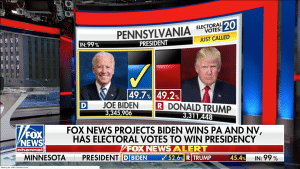
Screenshot from Fox News, via YouTube
Russia says it will wait until the “dust settles” before commenting on New START after US presidential election.
Russian Foreign Minister Sergey Lavrov tells the press, “Considering the current commotion in the United States caused by the ongoing vote recount, lawsuits, and other perturbation, we cannot expect any coherent proposals from either Trump’s people or Joe Biden’s team.”
“So, we will wait until the dust settles,” says Lavrov.
-
January 20, 2021
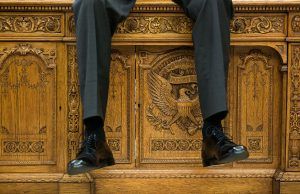
Official White House photo by Pete Souza
US presidential inauguration
Joseph R. Biden, Jr. takes office as the 46th president of the United States, just 16 days before the New START treaty is set to expire.
-
February 5, 2021
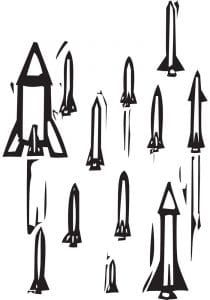
The end of New START?
Unless an extension is agreed, the New START treaty expires at midnight, marking the first time since 1972 that the United States and Russia would have no negotiated constraints on their strategic nuclear arsenals.
-
February 5, 2011

New START begins
Following a year of talks led by US State Department assistant secretary Rose Gottemoeller and her Russian counterpart Anatoly Antonov, the New START agreement is signed by Barack Obama and Dmitry Medvedev on April 10, 2010. After ratification, the treaty goes into force on February 5, 2011, capping both countries' strategic nuclear arsenals with provisions for verification by both sides.
-
January 28, 2017

Putin raises New START extension, Trump calls it a bad deal.
President Trump talks with Russian President Vladimir Putin for the first time as president. Reuters later reports that during this call, when Putin asked about the possibility of extending New START, Trump had to pause the call in order to ask an aide what the treaty was. Trump then called the treaty a bad deal negotiated by the Obama administration.
-
Trump administration puts off a decision on New START
Christopher Ford, special assistant to the president and National Security Council senior director for weapons of mass destruction and counterproliferation, says that the administration would wait to consider extension of treaty until after the completion of the Nuclear Posture Review and after the two countries meet the implementation deadline.
After the implementation deadline, he says, “we can begin to assess whether or not extending New START for an additional five years…is in our national security interest.”
-
US and Russian nuclear forces reached the New START strategic warhead and launcher limits ahead of the treaty's February 2018 deadline. (Courtesy Arms Control Association)
The treaty goals are met.
One year into the Trump presidency and seven years after New START took effect, the United States and Russia meet the treaty's implementation deadline, limiting their strategic nuclear arsenals to no more than 1,550 deployed warheads and 700 deployed missiles and heavy bombers each. The US State Department has continually assessed that Russia complied with the treaty.
-
March 1, 2018
Russia complicates New START extension with new weapons.
In an address to the Federal Assembly, Putin announces the development of five new nuclear weapons delivery systems, which had begun many years earlier, following the US withdrawal from the 1972 Anti-Ballistic Missile Treaty in 2002.
-
Putin hints Russia might make extra demands before any extension.
Trump and Putin meet in Helsinki, and their meeting includes a discussion on arms control. Afterwards, Putin says, “I reassured President Trump that Russia stands ready to extend [New START], to prolong it, but we have to agree on the specifics at first, because we have some questions to our American partners.”
-
United States floats the unworkable idea of including China
Secretary of State Mike Pompeo says that “Both the Russians and the United States have been compliant” with New START.
Regarding a five-year extension, he said, “We’re at the very beginning of conversations about renewing that. If we can get the deal right, if we can make sure it fits 2021 and beyond, President Trump has made very clear that if we can get a good solid arms control agreement, we ought to get one.” He also said that “we need to make sure we’ve got all of the parties that are relevant as a component of this as well,” which would include China, since “it’s certainly China that has large numbers.”
-
April 25, 2019
“Include Russia and China … include all the weapons, all the warheads, all the missiles.”
Trump introduces the idea of a new treaty, with far-fetched aims.
A senior Trump administration official says that President Trump instructed his staff in April to seek a new arms control agreement on nuclear weapons that would “include Russia and China and should include all the weapons, all the warheads, all the missiles.”
-
May 6, 2019
China rejects the idea of joining New START
China rejects the idea that Beijing will join the United States and Russia in arms control talks.
Foreign Ministry spokesperson Geng Shuang says, “We oppose any country’s attempt to make an issue out of China on arms control and will not participate in any negotiation for a trilateral nuclear disarmament agreement.”
This was to be the first of many refusals by China to join trilateral arms control talks.
-
June 18, 2019
US national security advisor believes New START extension unlikely.
National Security Advisor John Bolton says that, on the issue of an extension of New START, “There’s no decision but I think it’s unlikely.”
-
November 1, 2019
Test launch of an ICBM carrying the Avangard hypersonic glide vehicle on December 26, 2018 (Russian Defense Ministry)
Russia concedes that New START would cover two of its new systems.
Russia says that two of its new nuclear weapons delivery systems, the Sarmat intercontinental ballistic missile and the Avangard hypersonic glide vehicle, would be covered by New START. The Trump administration had been criticizing the treaty for not covering these weapons. Meanwhile, other weapons concerning to Washington would not be deployed until after 2026, a report released in November finds.
-
December 3, 2019
“We may bring them in later, or we may bring them in now.”
Trump wavers on earlier demands for China to join the treaty
Trump says that, “Russia wants to make a deal on arms control.” He adds, “We’ll also certainly bring in, as you know, China. And we may bring them in later, or we may bring them in now.” Later that day, Trump falsely claims that China is “extremely excited” about getting involved in an arms control agreement.
-
December 5, 2019
Russia agrees to extend the treaty without any extra demands.
Putin says, “Russia is willing to immediately, as soon as possible, before the year is out, renew this treaty without any preconditions.” This marks a shift in the Russian position, which previously had wanted certain concerns addressed before it would agree to an extension.
-
May 21, 2020
United States sketches out goals for new treaty with Russia and China.
Marshall Billingslea gives his first public remarks as US presidential envoy for arms control, during which he says that Trump gave him “crystal clear” instructions to achieve “the most complete, effective, and verifiable arms control agreement that can be negotiated.” This agreement, he says, must include China, cover new Russian strategic delivery systems and non-strategic nuclear weapons, and have “as strong a verification and compliance regime as you could imagine.”
-
June 22, 2020
United States hinges New START extension on progress toward new deal.
Billingslea meets his Russian counterpart, Deputy Foreign Minister Sergey Ryabkov, in Vienna for another round of the strategic security dialogue.
During a press briefing two days later, Billingslea says, “We are willing to contemplate an extension of [New START] but only under select circumstances.” Those circumstances, he continues, include making “progress” toward a new trilateral arms control agreement that has strong verification measures, covers all nuclear warheads, and involves China. He does not define what he views as “progress.”
-
July 30, 2020
Trump dismisses idea of including China.
Trump says again that, with respect to trying to include China in arms control talks, “We’ll talk about that later…China right now is a much lesser nuclear power—you understand that—than Russia.” He suggests that first, the administration would focus on arms control with Russia and then “go to China together.”
-
August 17-18, 2020
In another shift, US seeks a “politically binding” agreement on top of New START.
Billingslea and Ryabkov meet again in Vienna, and Billingslea afterwards communicates a shift in the US arms control strategy.
Billingslea tells the press that the Trump administration is now seeking a politically binding framework with Moscow as an interim step to a new trilateral arms control agreement. This framework, Billingslea says, must cover all nuclear warheads, fix “the most glaring deficiencies” in the New START verification regime, and include China not immediately, as previously demanded, but in the future. The special envoy says that he will recommend Trump extend New START if Moscow agrees to the framework.
Russia calls the US proposal “unrealistic.”
-
October 13, 2020
1/2 🇷🇺DFM S.#Ryabkov: 💬We did inform US on our approaches in different formats, including on paper. Thus #US has no grounds to be delusional and try and sell this situation as if it was in high developing constructive dynamic on the edge of breakthrough. pic.twitter.com/jteOEXMWeo
— Russian Mission Vienna (@mission_rf) October 14, 2020
US shifts again, abandoning earlier demands and instead proposing a shorter extension plus a warhead freeze.
Billingslea reveals that during his latest meeting with Sergey Ryabkov in Helsinki on October 5, he put a new proposal on the table: an extension of New START “for some period of time” paired with a freeze on all US and Russian nuclear warheads and some type of verification regime for the freeze. Robert O’Brien, the US National Security Advisor, later clarifies that the duration of both the extension and the freeze would be for one year. “There is an agreement in principle at the highest levels of our two governments” on this proposal, he claims. Ryabkov dismisses Billingslea’s claim as “delusional.”
-
October 16, 2020
-
October 20, 2020
“Our proposal can only and exclusively be implemented on the understanding that the United States will not advance any additional conditions with regard to freezing the arsenals.”
Russia expresses agreement to the warhead freeze, but not the US-proposed verification measures.
The Russian Foreign Ministry releases a statement in order to “clarify” Putin’s October 16 proposal as Moscow has “received no official response from the United States.”
“Russia has proposed extending New START for one year and is ready to assume a political obligation together with the United States to freeze the sides’ existing arsenals of nuclear warheads during this period,” the ministry says. “Our proposal can only and exclusively be implemented on the understanding that the United States will not advance any additional conditions with regard to freezing the arsenals,” referring to verification measures.
-
October 20, 2020
“We're very, very close to a deal.”
US doubles down on demanding verification measures.
State Department Spokeswoman Morgan Ortagus responds, “We appreciate the Russian Federation’s willingness to make progress on the issue of nuclear arms control. The United States is prepared to meet immediately to finalize a verifiable agreement. We expect Russia to empower its diplomats to do the same.”
Billingslea later insists that the United States and Russia “are very, very close to a deal” and that “there’s going to have to be effective verification associated with this warhead freeze.”
-
October 22, 2020
“It is not possible to say that we are on the verge of an agreement.”
Russia rejects verification measures explicitly
Ryabkov rejects the prospect of including any verification procedures. “It is not possible to say that [the United States and Russia] are on the verge of an agreement,” he says. “We have to state that the degree of our differences is rather significant.”
-
October 23, 2020
The deal, if there ever was one, begins to fall apart.
O’Brien admits that an agreement is “not a done deal.”
-
November 12, 2020
Russia says it will wait until the “dust settles” before commenting on New START after US presidential election.
Russian Foreign Minister Sergey Lavrov tells the press, “Considering the current commotion in the United States caused by the ongoing vote recount, lawsuits, and other perturbation, we cannot expect any coherent proposals from either Trump’s people or Joe Biden’s team.”
“So, we will wait until the dust settles,” says Lavrov.
-
January 20, 2021
US presidential inauguration
Joseph R. Biden, Jr. takes office as the 46th president of the United States, just 16 days before the New START treaty is set to expire.
-
February 5, 2021
The end of New START?
Unless an extension is agreed, the New START treaty expires at midnight, marking the first time since 1972 that the United States and Russia would have no negotiated constraints on their strategic nuclear arsenals.
Together, we make the world safer.
The Bulletin elevates expert voices above the noise. But as an independent nonprofit organization, our operations depend on the support of readers like you. Help us continue to deliver quality journalism that holds leaders accountable. Your support of our work at any level is important. In return, we promise our coverage will be understandable, influential, vigilant, solution-oriented, and fair-minded. Together we can make a difference.
Keywords: New START, Russia, United States, arms control, nuclear arsenals
Topics: Multimedia, Nuclear Weapons
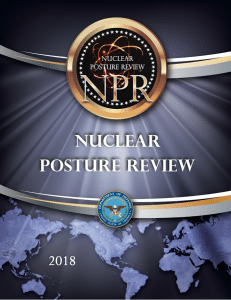
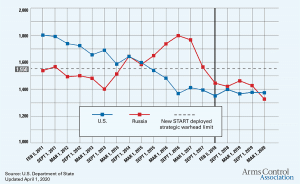

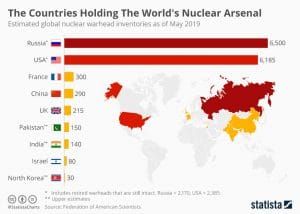

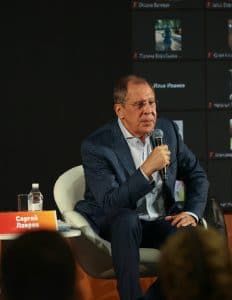















This is a great article, clearly showing how US politicians and arms experts — mired in the military industrial complex — discourage disarmament by arguing for “verification” and “multilateral deals ” and other deal breaking preconditions that have nothing to do with security requirements. President George H. Bush understood that US security requirements demand deep cuts in nuclear forces. He unilaterally cut the U.S. nuclear stockpile of active and inactive warheads by 50 percent, from 21,392 to 10,979 in September 1991. He understood his obligation to do so without hiding behind “verification” or other multilateral preconditions. He hoped the Russians… Read more »